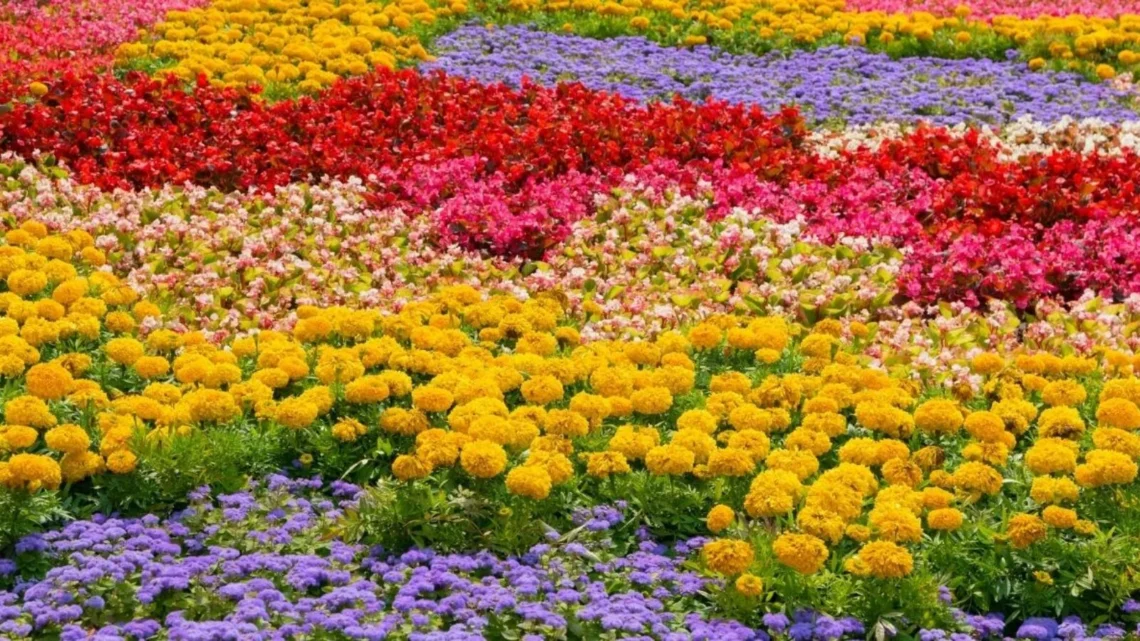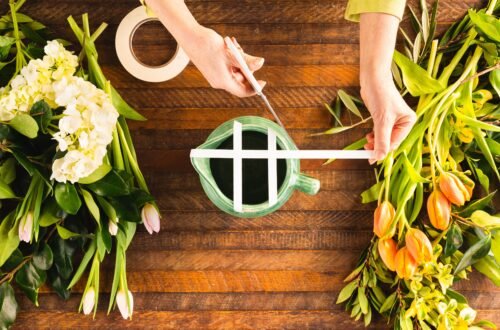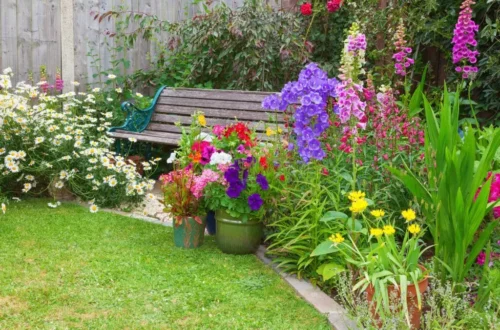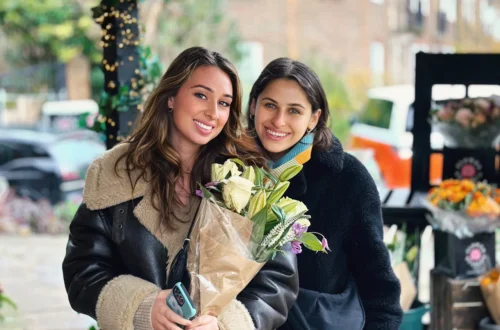Imagine stepping into your backyard and being greeted by a riot of color, fragrance, and life—a garden so vibrant it feels like a living painting. That’s the magic of choosing the right flowers. Whether you’re a seasoned gardener or just starting with a patch of dirt, the flowers you plant can turn your space into a sanctuary. In this guide, I’ll walk you through 50 stunning flowers that can transform your garden, sharing tips, personal stories, and practical advice to make your outdoor space a blooming masterpiece. From roses that whisper romance to wildflowers that dance in the breeze, let’s dig in and create something beautiful together.
Why Flowers Are the Heart of a Garden
Flowers aren’t just pretty faces; they’re the soul of any garden. They attract pollinators, boost your mood, and add structure to your landscape. Choosing the right ones can make your garden a year-round showstopper. Let’s explore how to select flowers that suit your climate, style, and gardening goals.
Understanding Your Garden’s Needs
Before planting, know your garden’s conditions—sunlight, soil type, and climate zone. Most flowers thrive in well-drained soil and at least six hours of sun, but some prefer shade or tolerate drought. A quick soil test (available at local garden centers) can reveal pH and nutrient levels, guiding your choices.
The Power of Color and Texture
Flowers bring visual harmony through color and texture. Bright blooms like marigolds pop against lush greenery, while delicate cosmos add airy elegance. Mixing heights, shapes, and bloom times creates a dynamic garden that evolves with the seasons.
Annuals vs. Perennials: What’s the Difference?
Choosing between annuals (which complete their life cycle in one season) and perennials (which return year after year) shapes your garden’s personality. Annuals like zinnias offer bold, instant color, while perennials like peonies build long-term beauty. A mix of both ensures constant blooms and sustainability.
Benefits of Annuals
Annuals are perfect for quick transformations. They’re budget-friendly, easy to grow, and let you experiment with new colors each year. Think of them as your garden’s seasonal wardrobe—fresh and trendy.
Advantages of Perennials
Perennials are the backbone of a low-maintenance garden. They require less replanting and often spread, filling gaps over time. They’re an investment in your garden’s future, like planting a legacy.
50 Beautiful Flowers to Transform Your Garden
Below, I’ve curated 50 flowers, divided into categories for sun, shade, and seasonal interest. Each comes with care tips and why it’s a game-changer for your garden. I’ve also included a personal story from my own gardening adventures to show how these blooms can spark joy.
Sun-Loving Flowers
These flowers thrive in full sun (6+ hours daily) and bring bold energy to your garden.
1. Sunflower (Helianthus annuus)
Sunflowers are the rockstars of sunny gardens, with towering stems and cheerful yellow petals. Plant them in spring for summer blooms that attract bees and birds. My neighbor once grew a 10-foot sunflower that became the talk of our street—kids would pose for photos in front of it!
2. Zinnia (Zinnia elegans)
Zinnias are vibrant annuals in every color of the rainbow. They bloom all summer and are drought-tolerant. Deadhead spent flowers to keep them blooming. I planted zinnias last year, and their hot pink blooms made my front yard feel like a festival.
3. Marigold (Tagetes spp.)
Marigolds are low-maintenance annuals with fiery orange and yellow blooms. They repel pests naturally, making them great companions for vegetables. Their spicy scent always reminds me of my grandma’s garden, where they lined her tomato beds.
4. Cosmos (Cosmos bipinnatus)
Cosmos are airy annuals with daisy-like flowers in pink, white, and red. They self-seed, creating a carefree meadow vibe. I once scattered cosmos seeds in a bare patch, and by midsummer, it looked like a wildflower painting.
5. Lavender (Lavandula angustifolia)
Lavender’s purple spikes and soothing fragrance make it a perennial favorite. It loves dry, sandy soil and full sun. Drying my first lavender harvest felt like capturing summer in a jar—perfect for sachets.
6–10 More Sun-Lovers
- Coneflower (Echinacea purpurea): Purple petals attract pollinators; drought-tolerant perennial.
- Black-Eyed Susan (Rudbeckia hirta): Golden blooms with dark centers; blooms late summer.
- Salvia (Salvia nemorosa): Spiky blue or red flowers; deer-resistant perennial.
- Coreopsis (Coreopsis grandiflora): Bright yellow daisies; blooms all summer.
- Gaillardia (Gaillardia aristata): Red and yellow blanket flowers; heat-tolerant.
Shade-Tolerant Beauties
These flowers shine in partial to full shade, perfect for wooded areas or north-facing gardens.
11. Impatiens (Impatiens walleriana)
Impatiens are shade-loving annuals with vivid pink, red, and white blooms. They’re perfect for containers or borders. I once planted impatiens under a tree, and their color lit up the dim corner like magic.
12. Begonia (Begonia semperflorens)
Begonias offer waxy leaves and flowers in red, pink, or white. They thrive in shade and are low-maintenance. My begonia pots survived a scorching summer on my shaded porch, proving their resilience.
13. Hosta (Hosta spp.)
Hostas are perennials with lush foliage and delicate lavender flowers. They’re shade superstars, ideal for ground cover. Their broad leaves transformed my shady backyard into a serene retreat.
14. Bleeding Heart (Dicentra spectabilis)
Bleeding hearts have heart-shaped pink or white flowers dangling from arching stems. They bloom in spring and love shade. Their whimsical shape always makes me smile, like nature’s love letter.
15. Astilbe (Astilbe spp.)
Astilbe’s feathery plumes in pink, red, or white add texture to shady spots. They prefer moist soil. I planted astilbe near a pond, and it felt like adding a fairy-tale touch to my garden.
16–20 More Shade Stars
- Foxglove (Digitalis purpurea): Tall spikes of bell-shaped flowers; biennial.
- Fernleaf Bleeding Heart (Dicentra eximia): Longer-blooming than its cousin; perennial.
- Columbine (Aquilegia spp.): Delicate, spurred flowers; self-seeds in shade.
- Primrose (Primula vulgaris): Early spring blooms in soft pastels.
- Lungwort (Pulmonaria spp.): Spotted leaves with pink or blue flowers.
Seasonal Showstoppers
These flowers ensure year-round interest by blooming in specific seasons or across multiple ones.
21. Tulip (Tulipa spp.)
Tulips are spring’s iconic bulbs, available in every color imaginable. Plant them in fall for a vibrant display. My first tulip bed felt like a personal victory—red and yellow cups swaying in the breeze.
22. Daffodil (Narcissus spp.)
Daffodils are cheerful spring perennials with yellow or white trumpets. They’re deer-resistant and multiply over time. Planting daffodils along my fence created a sunny welcome every spring.
23. Chrysanthemum (Chrysanthemum spp.)
Chrysanthemums bring fall color in reds, yellows, and purples. They’re perfect for late-season vibrancy. My fall chrysanthemums kept blooming through November, stealing the show.
24. Hollyhock (Alcea rosea)
Hollyhocks are tall biennials with spiky blooms in summer. They add cottage charm. I grew hollyhocks against my shed, and their pink towers made it look like a storybook scene.
25. Pansy (Viola tricolor)
Pansies offer cool-season color in spring and fall, with “face-like” flowers. They’re great for borders or pots. Their resilience through light frosts amazed me last autumn.
26–50 More Transformative Flowers
- Rose (Rosa spp.): Classic beauty; repeat-blooming varieties like ‘Knock Out’ are low-maintenance.
- Peony (Paeonia lactiflora): Lush, fragrant blooms; long-lived perennial.
- Dahlia (Dahlia spp.): Bold, diverse blooms; dig up tubers in cold climates.
- Petunia (Petunia hybrida): Colorful annuals for hanging baskets; long-blooming.
- Geranium (Pelargonium spp.): Bright blooms for sun or part shade; drought-tolerant.
- Snapdragon (Antirrhinum majus): Spiky flowers in vibrant hues; cool-season annual.
- Sweet Pea (Lathyrus odoratus): Fragrant climbers for spring; trellis needed.
- Phlox (Phlox paniculata): Fragrant summer perennials; attracts butterflies.
- Verbena (Verbena bonariensis): Airy purple clusters; self-seeds easily.
- Nasturtium (Tropaeolum majus): Edible flowers; repels pests.
- Yarrow (Achillea millefolium): Feathery foliage with flat flower heads; drought-tolerant.
- Bee Balm (Monarda didyma): Red or pink blooms; attracts hummingbirds.
- Delphinium (Delphinium elatum): Tall blue spikes; dramatic focal point.
- Poppy (Papaver orientale): Papery blooms in bold colors; short-lived but stunning.
- Lupine (Lupinus polyphyllus): Spiky blooms; thrives in cool climates.
- Shasta Daisy (Leucanthemum superbum): Classic white daisies; long-blooming.
- Hibiscus (Hibiscus moscheutos): Large, tropical-looking flowers; loves heat.
- Gladiolus (Gladiolus spp.): Tall spikes for summer; great for cutting.
- Iris (Iris germanica): Elegant blooms in spring; rhizomatous perennial.
- Canna (Canna indica): Tropical flair with bold foliage and flowers.
- Daylily (Hemerocallis spp.): Daily blooms in summer; low-maintenance.
- Allium (Allium giganteum): Globe-like purple flowers; deer-resistant.
- Cleome (Cleome hassleriana): Spider-like flowers; self-seeding annual.
- Alyssum (Lobularia maritima): Low-growing, fragrant ground cover.
- Vinca (Catharanthus roseus): Heat-tolerant annual; blooms all summer.
Comparison: Annuals vs. Perennials
| Feature | Annuals | Perennials |
|---|---|---|
| Lifespan | One growing season | Multiple years |
| Cost | Cheaper initially; replant yearly | Higher upfront; long-term savings |
| Maintenance | Higher; replanting required | Lower; established plants need less care |
| Bloom Time | Long, continuous blooms | Shorter, seasonal blooms |
| Examples | Zinnias, Marigolds, Cosmos | Peonies, Lavender, Hostas |
Pros and Cons of Annuals
Pros: Quick color, flexible design, budget-friendly.
Cons: Need replanting, higher seasonal maintenance.
Pros and Cons of Perennials
Pros: Long-lasting, low-maintenance, spreads over time.
Cons: Higher initial cost, slower to establish.
Where to Get These Flowers
- Local Nurseries: Offer region-specific varieties and expert advice. Check for organic or native plants.
- Online Retailers: Sites like Burpee or Bloms Bulbs provide a wide selection of seeds and bulbs.
- Garden Centers: Big-box stores like Home Depot or Lowe’s have affordable options, especially for annuals.
- Seed Exchanges: Local gardening clubs or online platforms like Seed Savers Exchange offer unique varieties.
Best Tools for Planting and Care
- Hand Trowel: A sturdy trowel like the Fiskars Ergo Trowel makes planting bulbs easy.
- Pruning Shears: Felco F-2 shears are durable for deadheading and trimming.
- Soil Test Kit: Luster Leaf Rapitest provides quick pH and nutrient analysis.
- Watering Can: A 2-gallon can with a rose nozzle ensures gentle watering for seedlings.
- Mulch: Organic mulch like cedar bark retains moisture and suppresses weeds.
People Also Ask (PAA)
What are the easiest flowers to grow for beginners?
Zinnias, marigolds, and cosmos are beginner-friendly due to their low maintenance and tolerance for various soils. Plant in full sun, water regularly, and deadhead to extend blooming.
Which flowers bloom all summer?
Petunias, zinnias, and salvia offer continuous summer blooms. Ensure they get ample sun and water, and fertilize monthly for best results.
Can I grow flowers in shade?
Yes, impatiens, begonias, and hostas thrive in shade. Choose moist, well-drained soil and avoid overwatering to prevent root rot.
What flowers attract pollinators?
Bee balm, coneflowers, and sunflowers are pollinator magnets. Their nectar-rich blooms draw bees, butterflies, and hummingbirds, boosting garden health.
FAQ Section
How do I choose flowers for my garden?
Consider your climate, soil, and sunlight. Use a soil test kit to check pH and nutrients, and select flowers suited to your USDA zone (find yours at USDA Plant Hardiness Zone Map). Mix annuals and perennials for year-round interest.
What’s the best time to plant flowers?
Spring and fall are ideal for most flowers. Plant annuals after the last frost and bulbs like tulips in fall for spring blooms. Check local frost dates for precision.
How can I make my garden low-maintenance?
Choose perennials like lavender or daylilies, use mulch to reduce weeds, and install drip irrigation. Native plants also require less care as they’re adapted to your region.
Are there flowers that repel pests?
Marigolds and nasturtiums naturally deter pests like aphids. Plant them near vegetables or roses for added protection.
How do I keep flowers blooming longer?
Deadhead spent blooms, fertilize with a balanced 10-10-10 fertilizer, and water consistently. For perennials, divide clumps every few years to rejuvenate plants.
Tips for a Blooming Garden
- Plan Your Layout: Group flowers by height—tall ones like hollyhocks in the back, low-growers like alyssum in front.
- Mix Colors Thoughtfully: Use a color wheel to create harmony (e.g., purples with yellows) or bold contrasts (e.g., red with white).
- Rotate Annuals: Change annual plantings yearly to prevent soil depletion.
- Attract Pollinators: Include nectar-rich flowers like bee balm to support local ecosystems.
- Water Wisely: Morning watering reduces evaporation and fungal issues.
My Gardening Journey
When I started gardening, my yard was a sad patch of grass and weeds. Inspired by a neighbor’s vibrant flowerbeds, I planted marigolds and cosmos as a beginner. The first bloom felt like a small miracle—proof that even a novice could create beauty. Over time, I added perennials like peonies and lavender, learning through trial and error (RIP my overwatered impatiens). Each season taught me patience and the joy of coaxing life from soil. Whether you’re planting one pot or a sprawling bed, these 50 flowers can spark the same magic in your garden.
Conclusion
Transforming your garden with these 50 flowers is like painting with nature’s palette. From sun-soaked sunflowers to shade-loving hostas, each bloom adds personality and life. Start small, experiment with colors, and let your garden tell your story. Ready to dig in? Visit your local nursery or browse Burpee for seeds, grab a trowel, and watch your garden bloom into a masterpiece. What’s the first flower you’ll plant? Share in the comments—I’d love to hear your plans!





